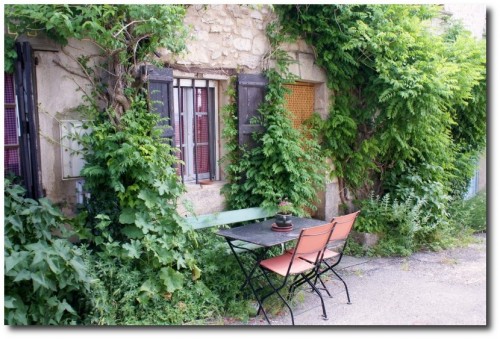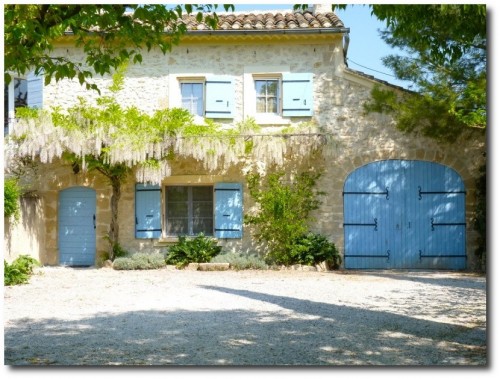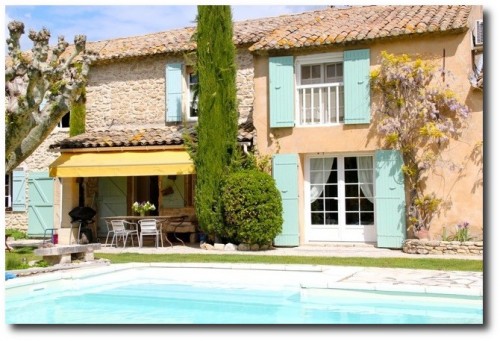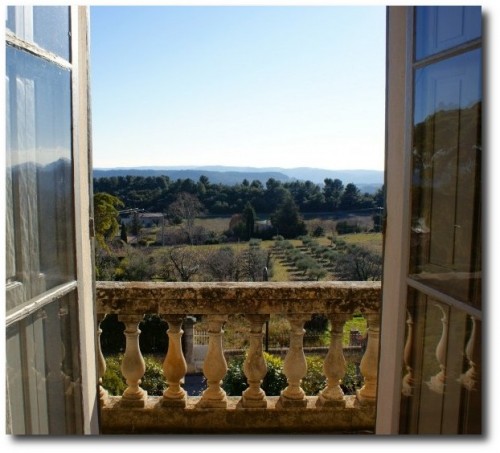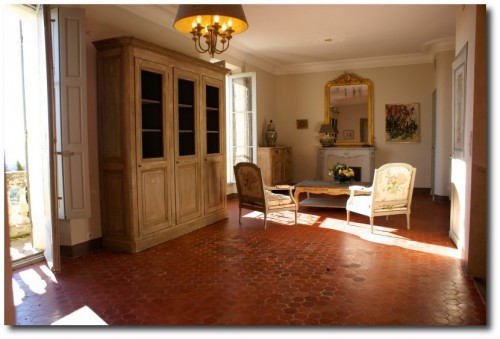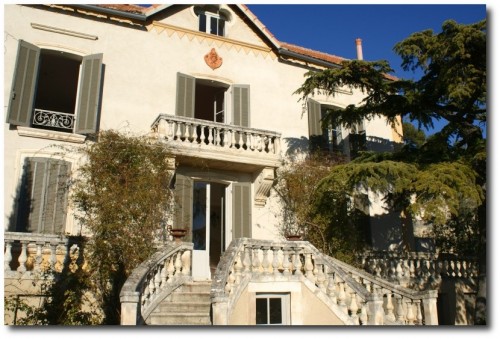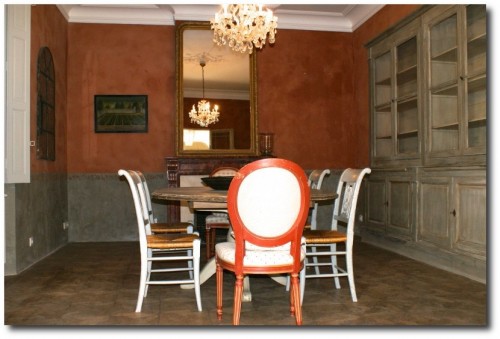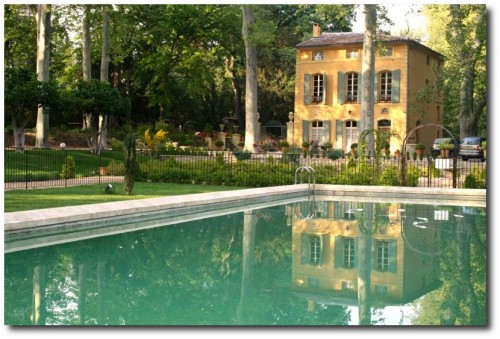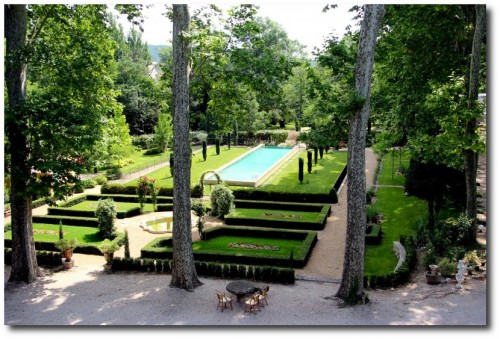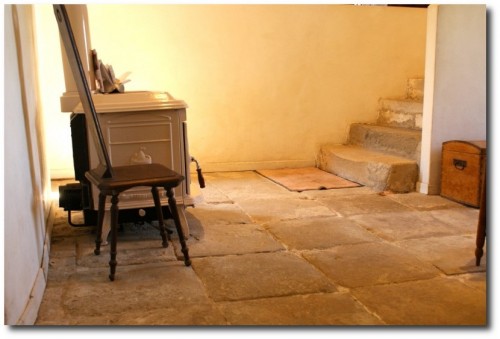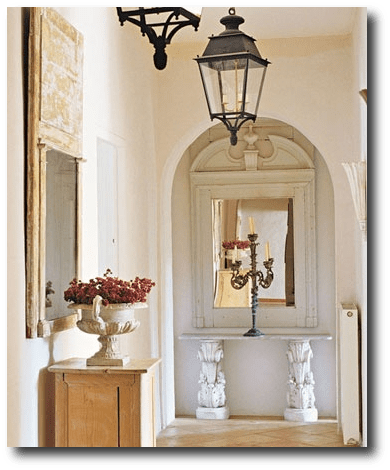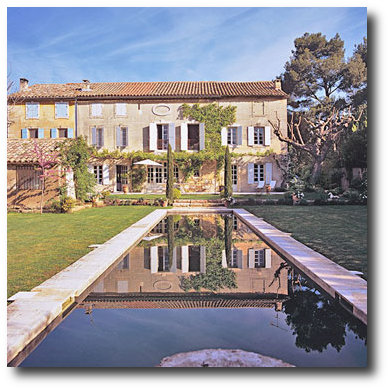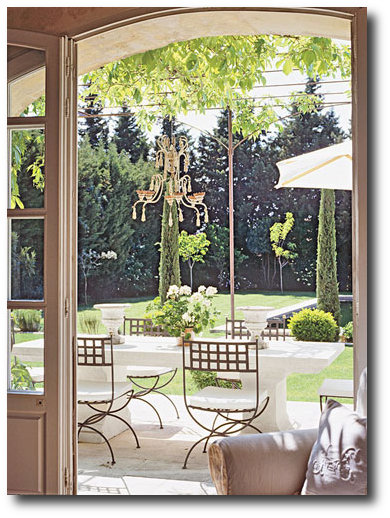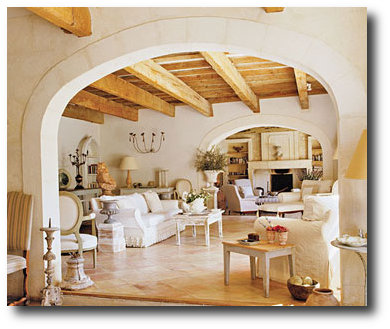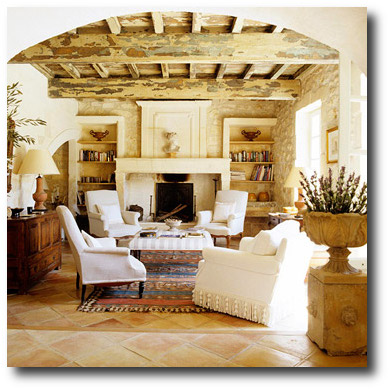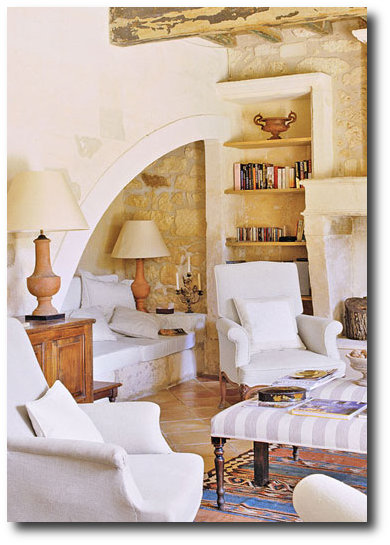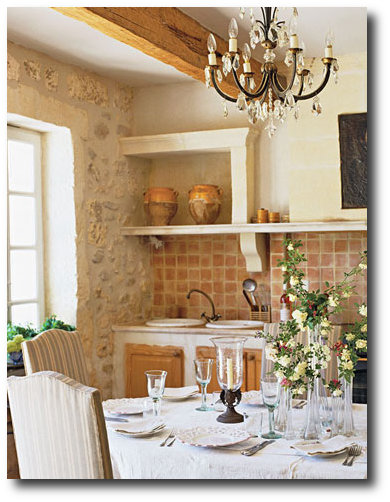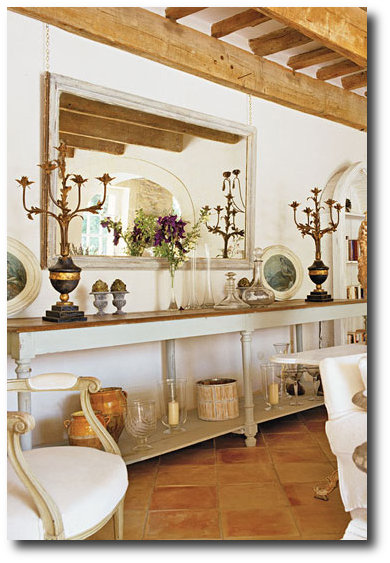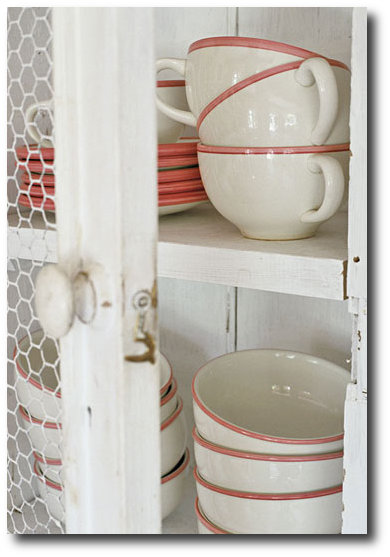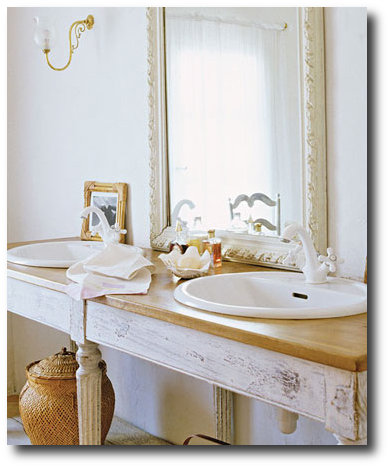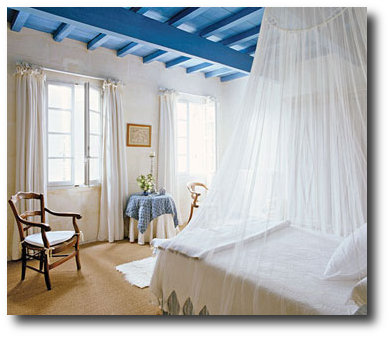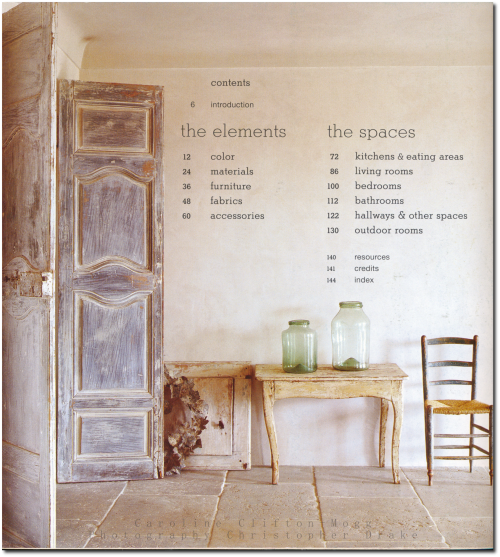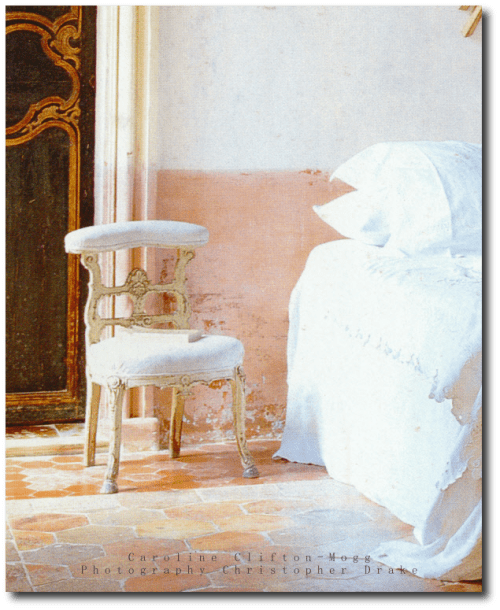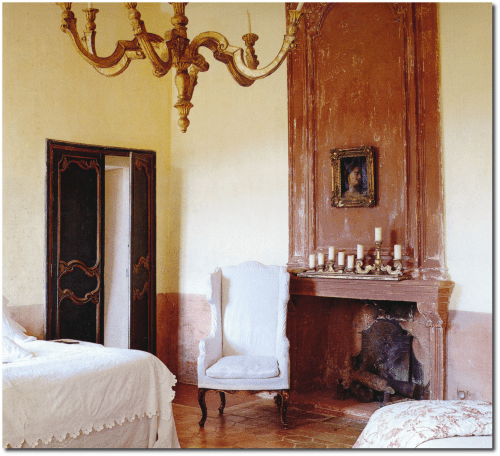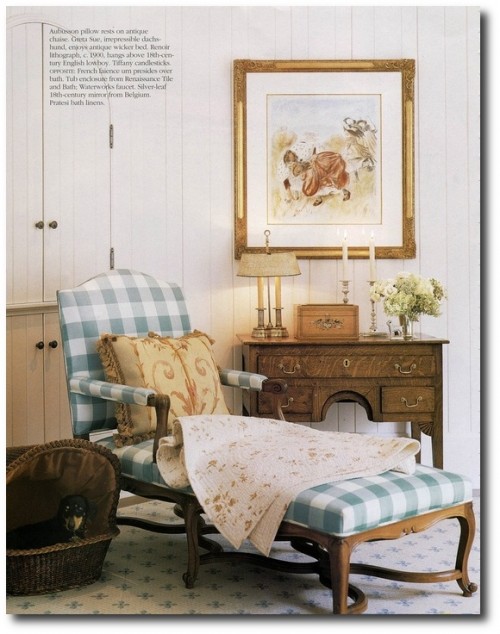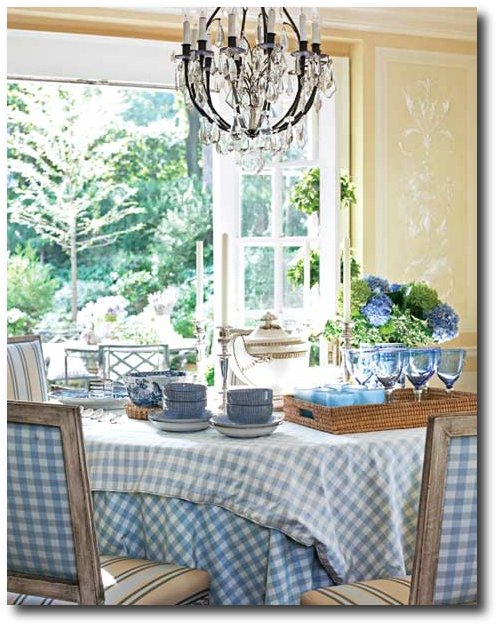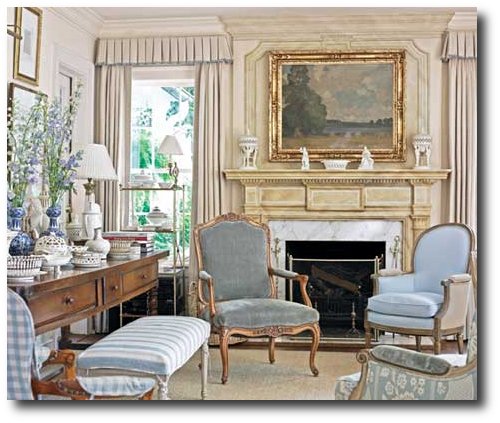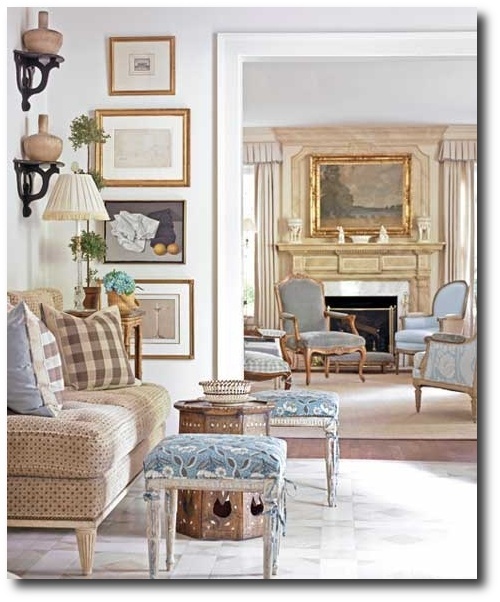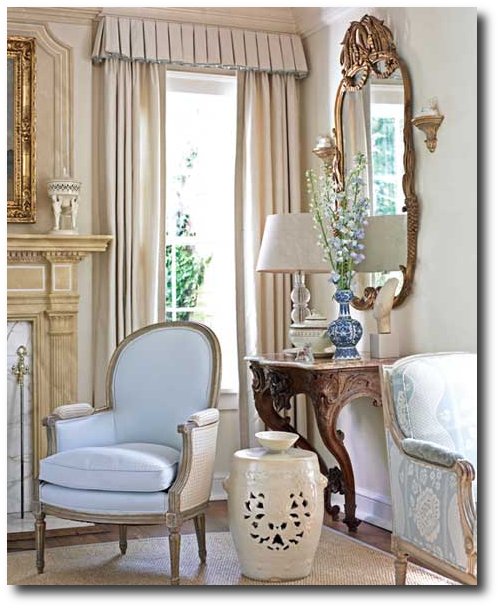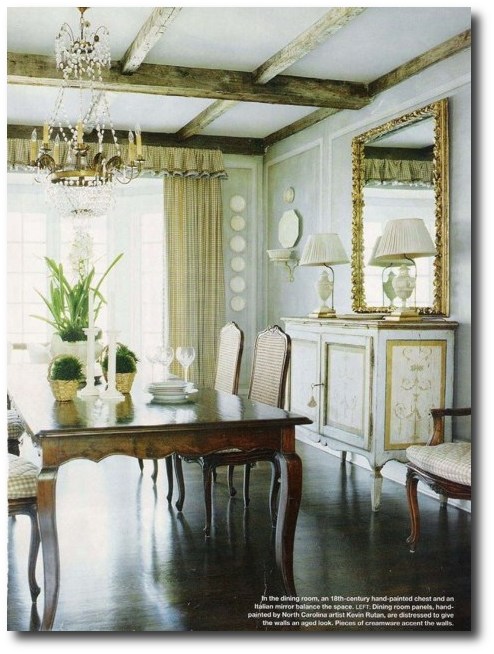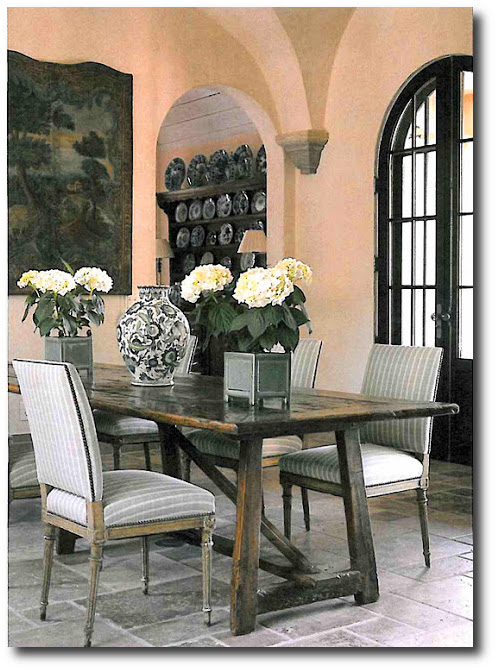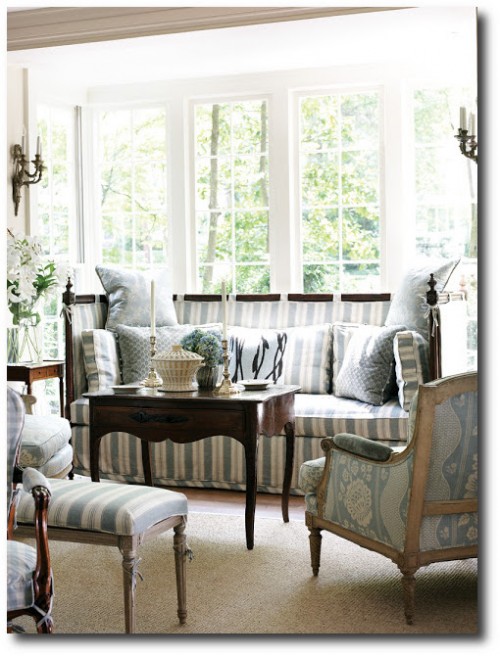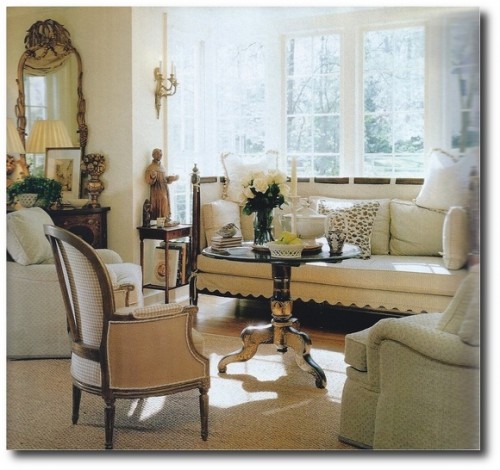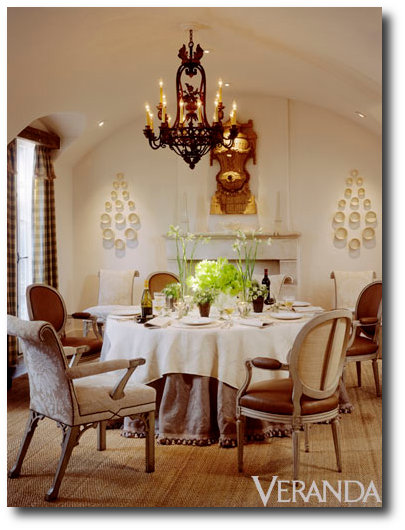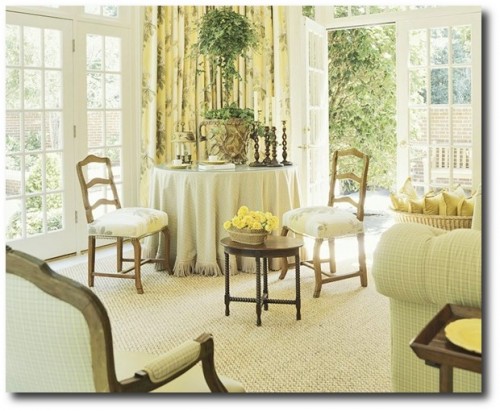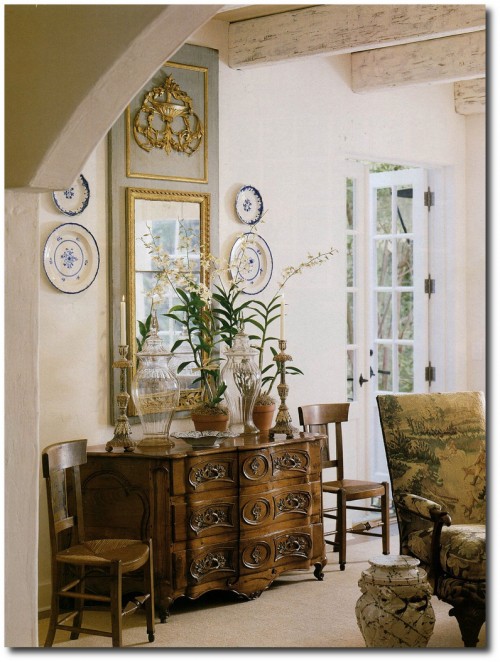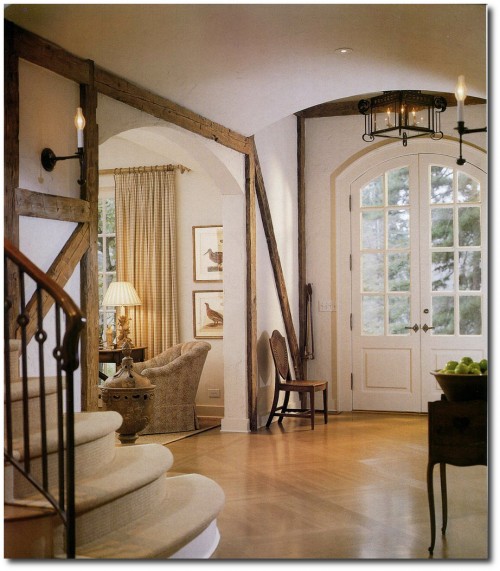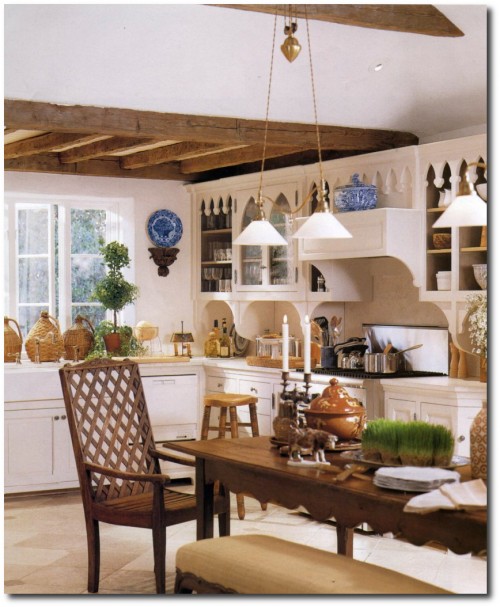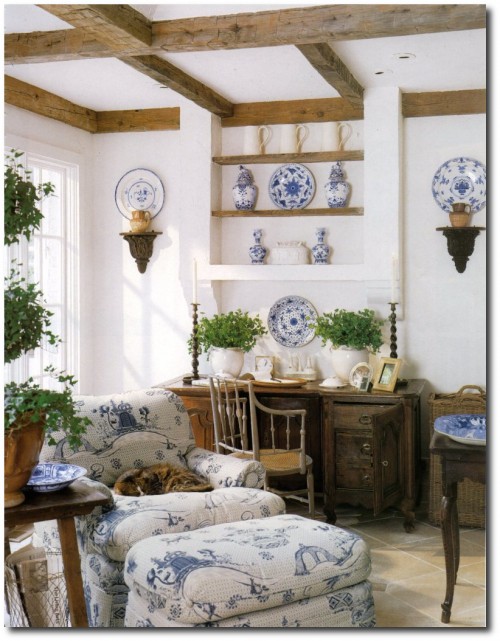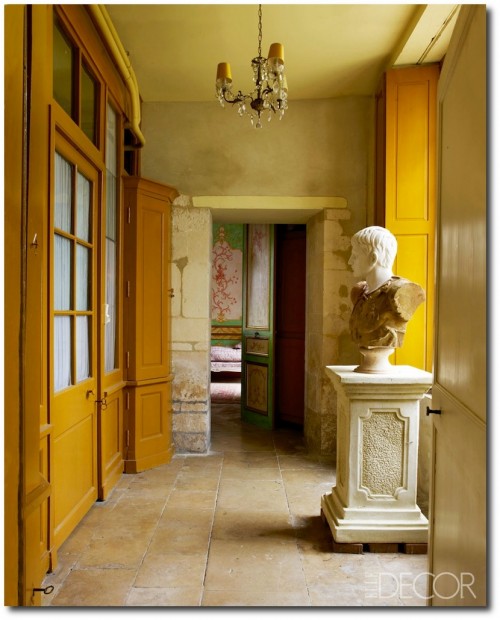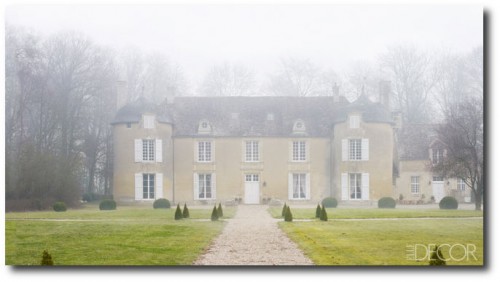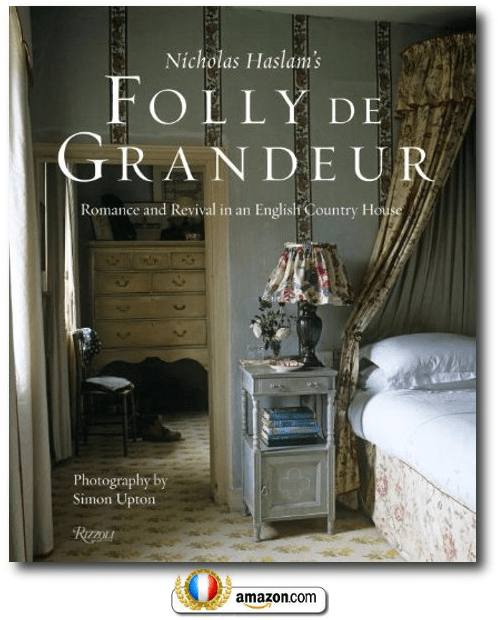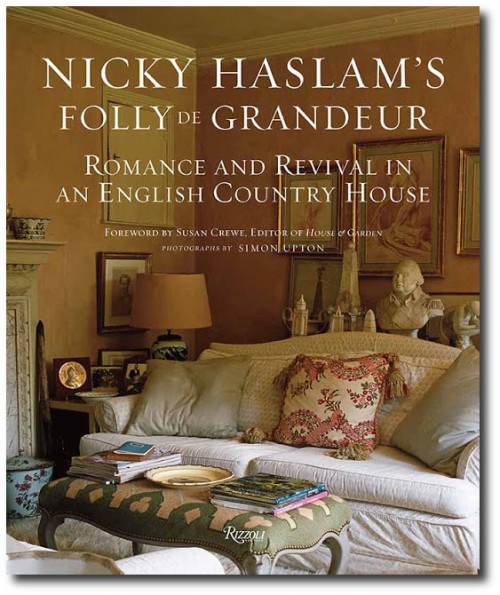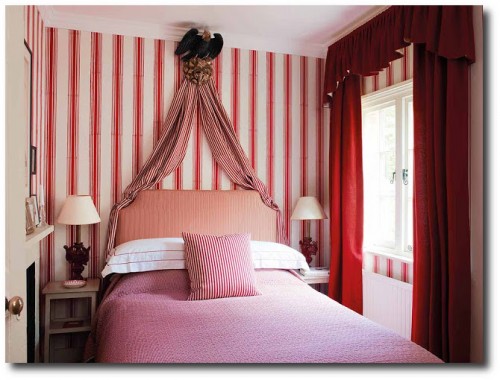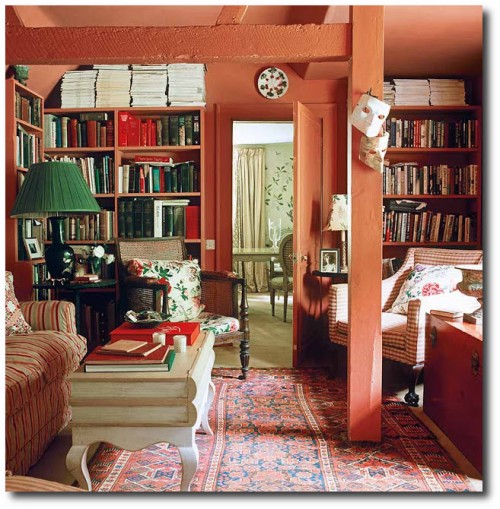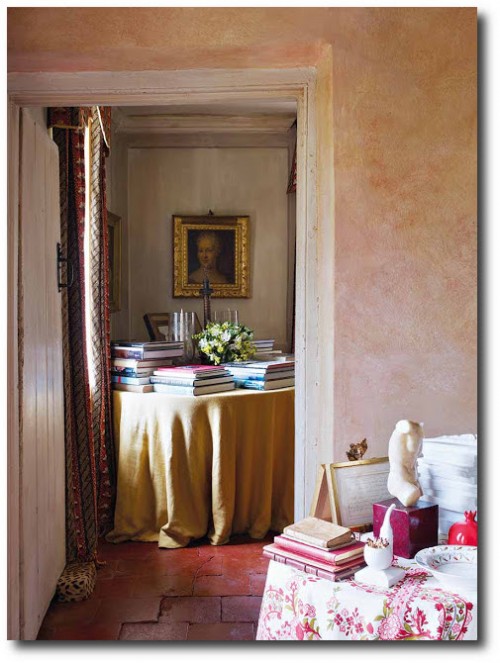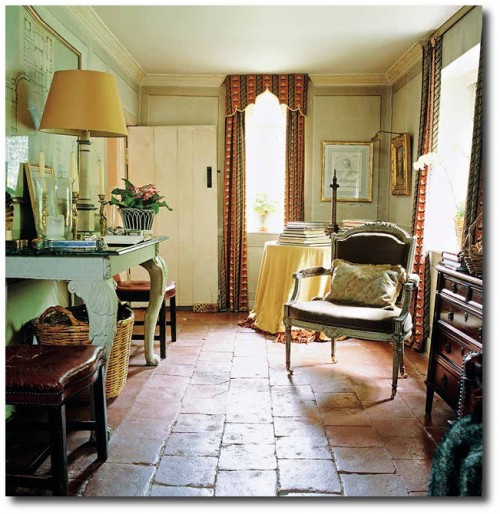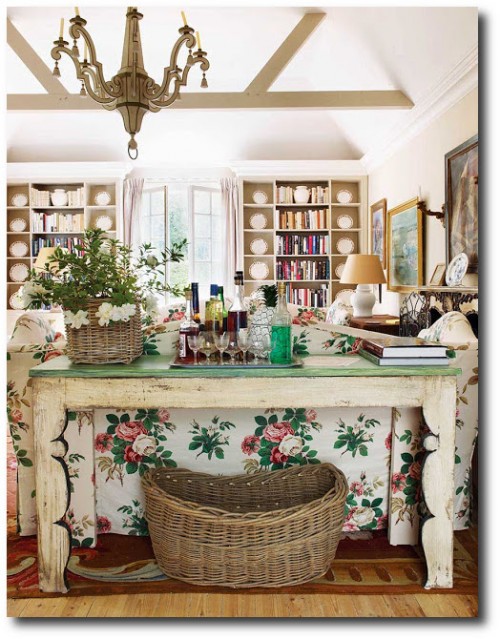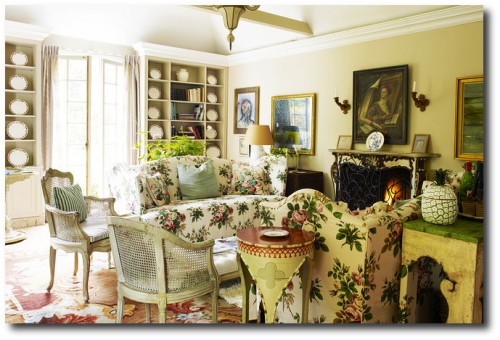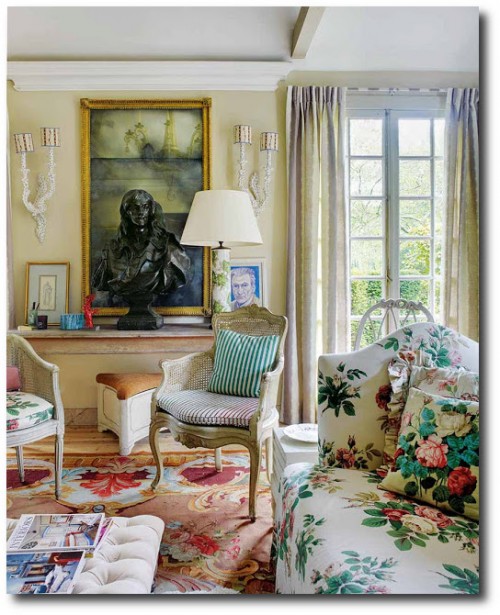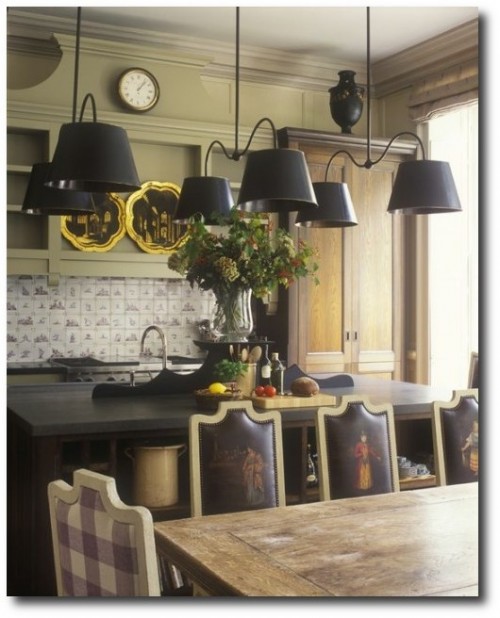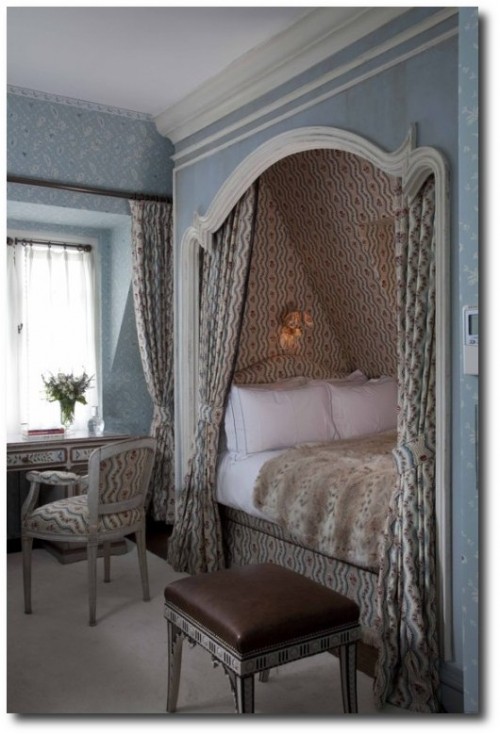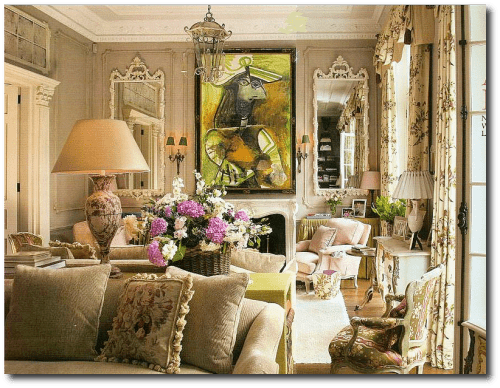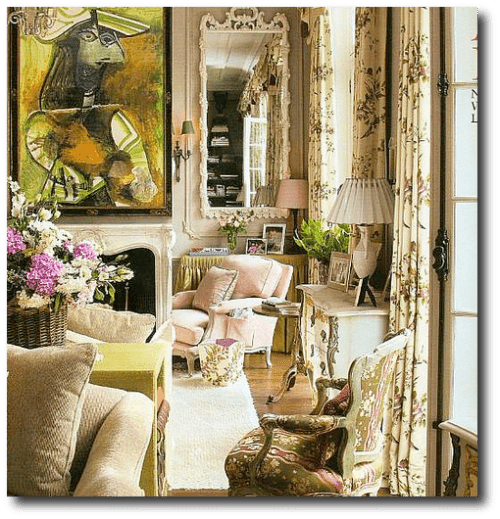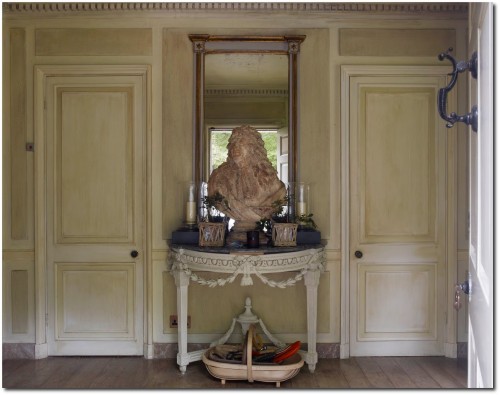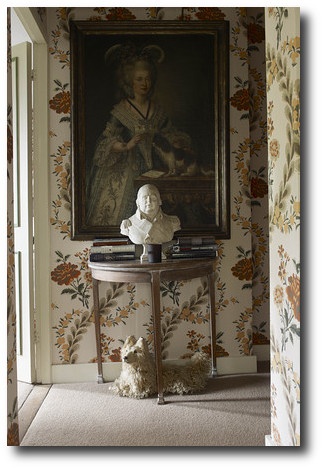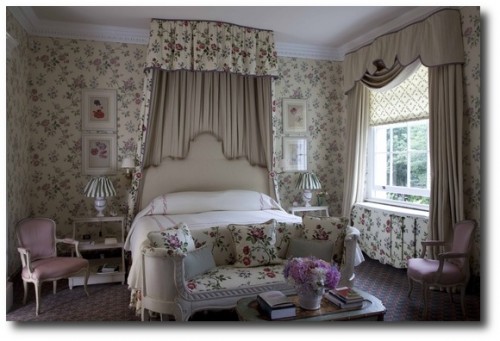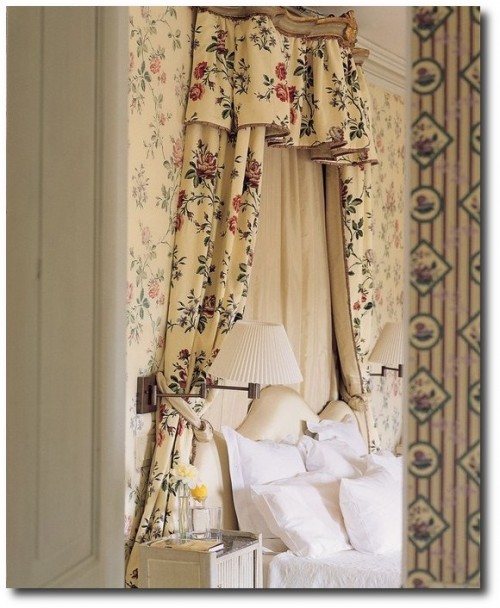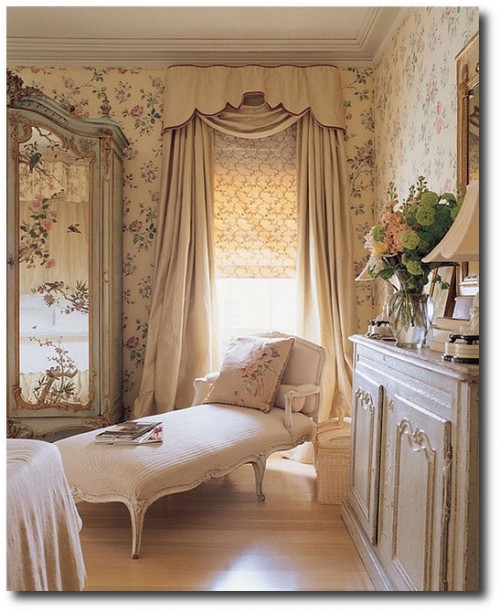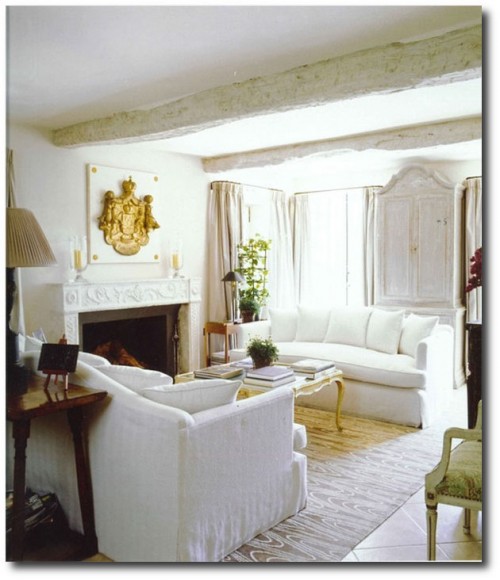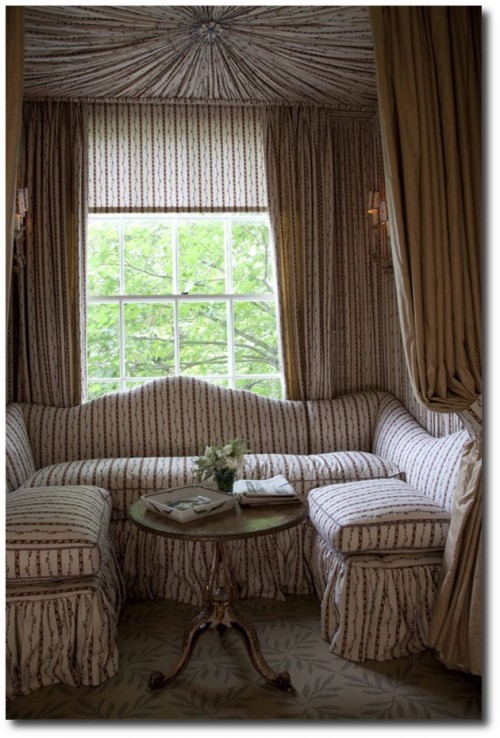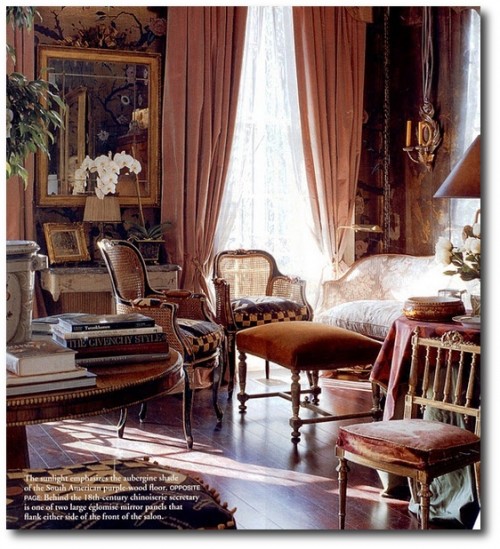
Authentic French Properties For Sale
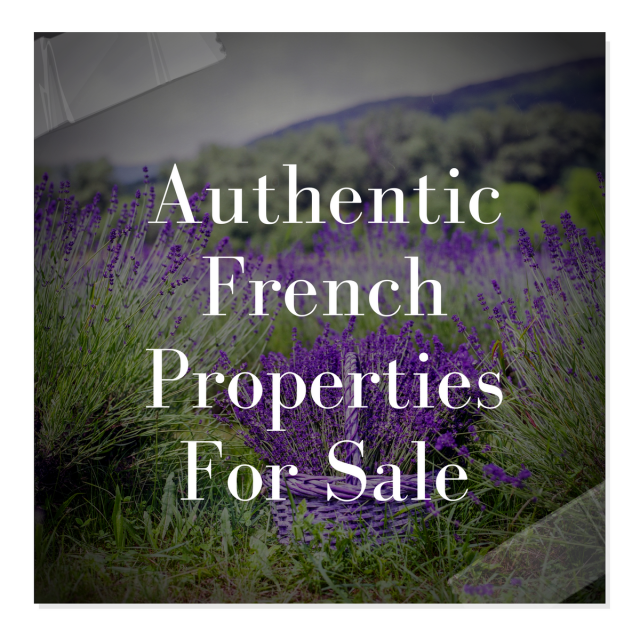
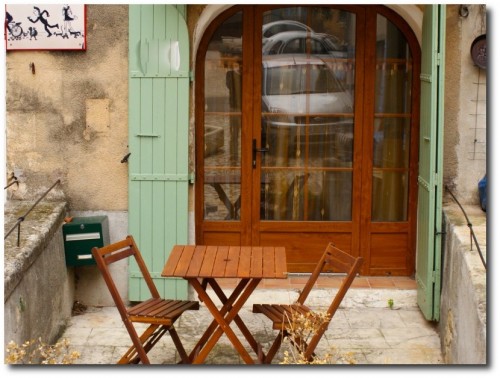
Charming Villiage House
Dream Home Provence has a few sensational French properties for sale. Here are just a few of my favorites:
1. Property 1 – This renovated Provencal villa for sale is located only 5 minutes from the historic town of Uzes in the highly sought after Uzege area of The Gard, Languedoc Roussillon. The 6 bedroom house for sale near Uzes is made up of 2 large holiday rental properties (gites) as well as the main dwelling for the current owners and is set in stunning grounds of 3 hectares with swimming pool and panoramic views of the exquisite Uzege countryside. In addition to the main house and the rental apartments there is also a studio with water and electricity, currently used as an office, that could be turned into an additional gite or guest house. The fully fenced garden is equipped with an enourmous 12m x 7m swimming pool ideal for cooling off during the long sunny summers in The South of France.
2. Property 2- A charming XVIII century Provencal property boasts a fully fitted kitchen, cosy living room with fireplace, 2 bedrooms and an office (or 3rd bedroom). It features traditional Provencal floor tiles and authentic old beams throughout. There is a terrace with magnificent views of les Monts de Vaucluse and also room for additional table and chairs at the front of the house. All this in a pretty little village in the heart of The Luberon, one of Provence’s most sought after areas.
3. Property 3– This wonderfully renovated farmhouse comes with landscaped gardens, a guest house, swimming pool, double garage and spa room. The property consists of the main house with lounge, fireplace and dining room both of which open onto the swimming pool and terrace facing the Petit Luberon. The outbuildings consist of a separate double garage, spa room with jacuzzi, sauna and walk in shower. All this surrounded by beautiful landscaped gardens boasting various fruit trees provencal flowering shrubs.
4. Property 4– Situated near the lively town of Cavaillon, in the countryside, at the entrance to The Luberon Regional Park, this old farm house for sale in Provence is features several fruit trees native to the region and is located in a region that has over 300 days of annual sunshine.
5. Property 5- This cosy 2 bed village house is situated in the beautiful Provencal village Rustrel in the heart of The Luberon Natural Park in Provence. The village is alive all year round and is home to a bakery, a restaurant, a bar, a school and a grocery store. The lively market town of Apt is just 10 minutes away. There are wonderful walks to be had directly from the house, with the Monts de Vaucluse directly behind and the ochre hills of the “Provencal Colorado” also at your doorstep.
6. Property 6- This manor house for sale in Provence is situated in a typical Provencal village just 5 minutes from Lourmarin in Luberon South. The property dates back to the late 1800s, is south facing and has been excellently renovated throughout. All rooms are light and spacious with high ceilings and lead onto exquisite views of the surrounding countryside. Aix en Provence is only 35 minutes away.
7. Propery 7 This exceptional XVIII century manor house for sale is located just 15 minutes walk from Aix en Provence city centre. The entrance to the house is made up of an alley of 200 year old plane trees and garden features numerous fountains and a 25m x 5m infinity pool. A haven of peace just minutes away from the lively and highly sought after town of Aix en Provence. Ideal as an investment in Provence, a large family home or tourist business in The South of France.
Stone village house for sale near Apt en Provence
French Property With Fruit Trees
Provence Home With Views of Luberon
French Manor House
French Manor House
French Manor House
French Manor House
Mansion in Aix en Provence City
Mansion in Aix en Provence City
XVII century house Roussillon Luberon – here
Save

A Restored Farmhouse In Provence, France
When the three farm buildings merged to create a single luxurious home, the result was a functional, yet beautiful to live in. A trio of worn 1850s structures in Provence was transformed into a single, spacious farmhouse. Renovating a trio of Provence farm buildings wasn’t an easy process. It all started with two decrepit houses and a gaping barn in between. Today the three buildings are linked together, which are seen as one whole home with all the modern comforts and old-world charm. Old beams and stonework were preserved, and the new stonework was created mimic the original. A wisteria-shaded pergola is the perfect spot for taking in the tranquil scene of the stone-edged reflecting pool. The house’s original structural beams are displayed in the living room area, enhanced by the patina of generations of paint. To add depth to these beams, the flaking and peeling layers were lightly sanded to reveal the wood with just a touch of subtle colour. Double living rooms bring an open floor plan to the main level of the home. These two rooms are linked by newly constructed arch. A fruitwood-topped buffet running along the rear wall of the large living room provides display space for the homeowner’s antiques.
In the kitchen area, old stone gives this room an old Provence feel. Wooden cupboard fronts, and limewash blends the shelving subtly with the rest of architecture. An antique Italian mirror at the top of the stairs makes a strong statement. A trumeau mirror is heavily distressed and works nicely with a rustic wood pedistal which sits am urn with a splash of red foliage. One of the bedrooms shows an saturated blue painted ceiling and beams. The bathroom shows off a pair of porcelain basins were mounted into a country table.
All images and information from Remodeling Center.
Save

Book Review: French Country Living By Caroline Clifton Mogg
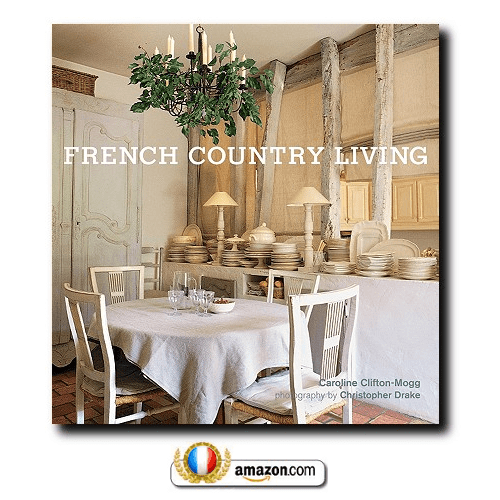 With the pricy cost of books these days, often times, I like to try them out at my library before buying them. If they are great, I tend to write up a post, because an exceptional book needs to be known. This is a book worth buying! I tend to enjoy the books that reveal more of the historical properties, because they provide a unique and fresh approach to decorating. After looking at thousands of pictures for our many blogs, there are a few books in my library that I can look at over and over again, and they never become dull. This is one of those books. With close to 5 stars on Amazon, selling new for $32, and used from $8, this book can be a classic in your library.
With the pricy cost of books these days, often times, I like to try them out at my library before buying them. If they are great, I tend to write up a post, because an exceptional book needs to be known. This is a book worth buying! I tend to enjoy the books that reveal more of the historical properties, because they provide a unique and fresh approach to decorating. After looking at thousands of pictures for our many blogs, there are a few books in my library that I can look at over and over again, and they never become dull. This is one of those books. With close to 5 stars on Amazon, selling new for $32, and used from $8, this book can be a classic in your library.
There is a great beauty of discovering the old, the worn, something loved for years, and passed down through families. Caroline Clifton Mogg writes a number of chapters, on the elements which make a home.
Page 12- Color, Page 24 Materials, Page 36 Furniture, Page 48 Fabrics, Page 60 Accessories, Page 72 Kitchen and Eating Areas, Page 86 Living Rooms, Page 100 Bedrooms, Page 112 Bathrooms, Page 122 Hallways & Other Spaces, Page 130 Outdoor Rooms
In this book, 140 pages covers 307 color photographs that illustrate the beauty of the French countryside. City decorating is quite different from French country decorating for the most part. The country approch is rustic, rough in some situations, and a bit more relaxed.
One review left this comment:
“If you are afraid of color, this book is for you. Don’t let it convince you, though, that french country is not about bold colors- every other book I’ve seen says the opposite. That said, it is a beatiful book, with lots of rustic elements.”
If you are looking for the saturated colorful interiors like this, this or this, this book covers more of the muted styles. Intead of rich saturated colors, it works with colors that are muted. This book certainly presents an elegant approch to the French countryside home, rather than the folk country looks with rich vibrant colors. Certainly many of these looks that the author presents can be used in the city as well as the country.
Pictures from the book featured on Blogs
– Trouvais Blog features page 57, 13, 122
-Painted Furniture – Page 46
-Brooke Giannetti- Page 14, 50, 102, 110, 12, 18, 96, 40, 49, 27
– Aged and Gilded Blog, Page 139, 138, 76
– Paris Apartment- Page 85,
-Zsa Zsa Bellagio Blog- Page 97
Here are a couple more pictures that I cannot locate in the book:
– Spectacular French Doors, here
-A Buttercup Yellow Wall Cabinet – here
Quotes From The Book:
“From gray also come mauve and lilac—either as bright as the color of violets or or closet to the quiet, almost musty tones that are quintessential French, and which look so winning when teamed with gray green, perhaps used on woodwork. A more sophisticated combination that is sometimes seen is a gray mauve offset by a dark, almost terra-cotta red—the red known as sang de boeuf makes a particularly effective contrast. Pinks and peaches are also to be found among the range of
French country colors, but they are not childlike nursery tones—there is nothing of a sugary or sweet nature about them. Like so many French country colors, the pinks and peaches appear
almost organic, seeming as though they might have emerged from the color of the original plaster than applied on top of it, and again, they often seem to include a hint of pale ancestry”
“A wide variety of woods is evident in rural interiors,but the woods used in different parts of France
were and are largely those from the trees growing in the surrounding countryside—fruit woods such as walnut and cherry, and traditional hardwoods such as oak and elm. Exotics such as mahogany or
maple will not be found in abundance here, for self-sufficiency is the name of the game”
Reviews:
By “Caroline Clifton-Mogg’s French Country Living is a delicious book to look at; the pages are filled with beautiful, airy rooms and the accompanying text does a good job of explaining how the effect is achieved–lots of grey in the colors, painted furniture, small-sized fabric prints, etc.
By Hollygolightly- “This is French country living in the Marie-Antoinette-at-Petit-Trianon style, not truly rural la France profonde, however. The exquisitely restored rooms are filled with priceless antiques, and a cursory glance over the photo credits suggests that the majority of houses shown are located in either Provence, or the richer departements near Paris (the most famous house in Yvelines is Versailles, if that gives you an idea of what’s in the neighborhood of some of the chateaux photographed). Having seen more than one room in a rural French house with vinyl wallpaper on the ceiling and door, I can only wish that all of French country life was this beautiful! ”
By John Matlock -“In this book, hundreds of color photographs by Christopher Drake, illustrate the essence of the French countryside. The book is in two parts, the first emphasizes the soft, non-contrasting colors and the natural materials and textures that are distinctly France. The second part of the book looks at the overall style. It looks at the French home, starting of course with the kitchen (this is after all France). Only then does it move on to the rest of the house, ending with the French garden. And this is France, so the garden also emphasises a place to eat and drink.”
By Julie BarrettZiegler- Fantastic photography, and a generous, diverse selection of beautiful interiors. From iconic over-the-top French decorating, to simple Provençal country style, this book celebrates the special environments for real living evoked by good French decorating style.
By D Thoden- I got this book as a Christmas present 3 yrs ago, and it is still one of the best decorating books I have ever owned. If you like whites, creams and soft, grayish colors, along with authentic chippy antiques shown in lovely old homes, you should love this book. It’s not LOOK AT ME decorating. It’s used, comfy, old furniture and fabrics, and it’s divine. This book ultimately changed the look of my home. The holidays were especially rough that year; I missed my Mother and was sick while at my in-laws over the holidays. This book got me thru it all!!! I just laid in bed and read it and looked at the photos over and over.
By Gerard Brady -Love this book. I have all kind of pages marked for ideas. Beautiful pictures, descriptions. The book is in great shape as advertised. It will become one of my “go to” books for decorating. Love it!
By Savannah, GA USA- By I love this book for ideas and inspiration. My favorite part of France is the Loire Valley and Sologne. The pictures in this book show that classic casual style. I also love Paris, but the Parisian style is more formal and ornate. I like the brick and terra cotta floors, the wood furniture, the lavender and sunflowers of the countryside. This will take you beyond chicken figurines and calico prints! Great read, great price. Great book for daydreaming! Enjoy!I have also bought Italian Country Living by the same author. Another wonderful book.
By T. Brashear “Dessa”- Sumptuous photos of sumptuous French provincial houses, with helpful guidelines about what characterizes French country decors (though I agree with one reviewer that not too many French country houses look like this). I particularly like the author’s emphasis on how livable the style is, and find this to be true too. Buyer beware however that French country may look a lot different in an American ranch house: a lot of the charm comes from plastered stone walls, old beams and well-worn tile floors.
By Stacey M Smith- Beautiful book. Inspiring photographs that capture French country style (obviously, note the title). My only complaint about Clifton-Mogg books is that the photos are recycled. I see the same photos is many other books. There are MANY wonderful estates, villas, and country properties out there – – – it would be nice to see more of them instead of these multi-used images. The “recycles photos” are no problem if you just have one of her books – – but if you buy many European decorating books, you may see repeat photos.
Striking distressed doors with a neutral background
One common paint technique we don’t see today is the bottom half of a wall painted in a different color. Perhaps this was done to clone the look of wood architectural wainscoting?
It certainly looks amazing, and a look that can add a bit of color into a room,without having to paint an entire wall.
Look how the pale pink on the walls picks up the beauty of the tile. Spectacular!
This is the other part of this amazing room

Dan Carithers French Provincial Designs
Dan Carithers October 1999- Featured on Magpies and Magnolias Blog
Now retired after a 50-year career creating rooms photographed for shelter mags like Veranda, House Beautiful, Traditional Home and Southern Accents, Carithers rooms still remain current, and is often the most blogged about designer around. In 2003, Carithers was named one of House Beautiful’s “Giants of Design”—the highest honor bestowed by the magazine; it’s only been given to a handful of honorees during its 100-year history.
Dan Carithers grew up in small town Jefferson, Georgia, and first gained notoriety as the design director for home furnishings at Rich’s Department Store. The job had an added bonus of being able to travel abroad which exposed Carithers to the latest home fashions and antiques from London and Paris. Carithers launched his own firm, and also established a long-time consulting position with Baker Furniture, and created an high-end upholstery line with Sherrill Furniture.
Carithers tends to lean towards the elegant side of decorating. Antique-filled homes with bold punches of color is a signature style of Dan Carithers. He suggests to pick out your accent color first, and repeat it throughout the house. As you can see in many of his designs, he tends to use neutrals on the walls, such as chocolate browns, creams and beige. Carithers often used mirrors to expand light, using slipcovers that often left the bones of the chair exposed. He often utilizes thought-out pieces for his rooms often looking around for the perfect choice. He mentions that a chair can have great impact in the direction of a room.
Dan Carithers French Style Decorating – Carither’s Home Featured in Southern Accents
Dan Carithers French Style Decorating – Carither’s Home Featured in Southern Accents
Dan Carithers French Style Decorating Featured in Southern Accents
Dan Carithers French Style Decorating – Carither’s Home Featured in Southern Accents
Dan Carithers- Southern Accents Magazine
Dan Carithers Traditional Home Magazine
Dan Carithers French Style Decorating – Carither’s Home Featured in Southern Accents
Southern Accents Oct 1997
Kitchens I Have Loved Blog scanned in some pictures of the Carithers Home which show a provence styled interior
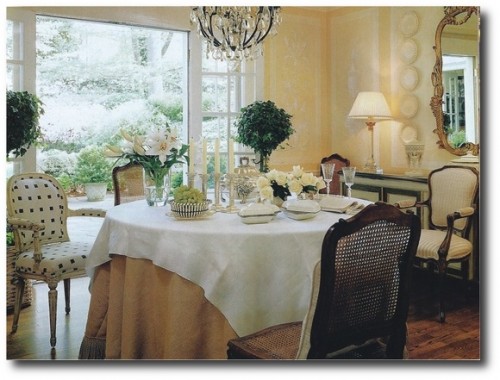
Carithers Home –Kitchens I Have Loved Blog
Carithers Home –Kitchens I Have Loved Blog
Dan Carithers In Veranda Magazine
Traditional HomeDan Carithers- Featured On Developing Design Blog
Dan Carithers October 1999- Featured on Magpies and Magnolias Blog
Dan Carithers October 1999- Featured on Magpies and Magnolias Blog
Dan Carithers October 1999- Featured on Magpies and Magnolias Blog
Dan Carithers October 1999- Featured on Magpies and Magnolias Blog
Dan Carithers October 1999- Featured on Magpies and Magnolias Blog
Save

Tremolet’s Chateau d’Ailly in Normandy
Gerard Tremolet worked in the fashion world most of his life, but after leaving the industry of fashion, he pursued his own interests in interior design. Back in 2007 he and his partner purchased the Chateau d’Ailly in Normandy and renovated it to transform it into a bed and breakfast. To decorate the castle Gerard Tremolet drew his inspiration from his love of the 18th century, adding his own personal touches along the way. While the colors aren’t historically accurate, Tremolet shows us that bright, bold color can be used in period styled homes and furniture.
Saturated dark red walls in the dining area are paired with a beautiful collection of natural vintage styled baskets and blue-gray provence chairs for a nice contrast. The combination of the damask wall fabrics, striped velvet fabrics, and iranian patterns show us that even complex color combinations can work together. Colors such as yellow, turquoise, hot pink and lime are some of the colors used throughout the Chateau d’Ailly. French XV, XVI furniture, and Italian Venetian furniture and accessories are paired together giving off a look that is carefully collected and adored. A modern styled “Renaissance-style ” approach is used through the home, and can be seen in the guest bedroom. One the best rooms is shown below. The walls and curtains are of a Thevenon toile de Jouy. A Louis XV armchair sits in the bedroom and can one of the best examples of French style in the home.
To read the full article head over to Elle Decor.

Nicky Haslam’s Romantic Country House
‘Nicky Haslam’s Folly de Grandeur: Romance and Revival in an English Country House’, is Haslam’s newest book on authentic, English country style decorating.
Haslam shows interiors with carefully mismatched antique and vintage furniture, with color palettes of warm welcoming tones. From vignettes, to getting the most bang from your hallway, Haslam gives away a wealth of visual interest to the reader. Learn how to incorporate art, accessories and furniture for a home which is comfortable, yet strikingly beautiful.
Haslam shows off his own 1720 house in Folly de Grandeur. Floor plans and diagrams illustrate the homes detailed history, as well as the traditional garden, furnishings, and the details of the conservatory. Images of the house through the seasons shows his true love and attention for the home’s details. Images of his collecting from flea market finds and treasures from boot sales are captivating. He shows off upholstery, curtains, chair backs, improvised lampshades and slipcovers.
Interesting Links:
– Nicky Haslam -British Interior Designer’s Website
-Nicky Haslam’s Country House – WSJ–Nicky Haslam, renowned interior designer and London man-about-town, calls a 16th-century royal hunting lodge in the English countryside his home away from home—rose chintz sofas, portraits, flourishing garden and all
-NOW AND THEN: Dreamy English Country Cottages by Colefax and Fowler- Decor Arts Now
-1stdibs Introspective – Nicky Haslam- 1st Dibs
-Interview: Nicky Haslam- House & Home Magazine
-Oh, Nicky, You’re So Fine, You Blow My Mind, Hey Nicky! The Style Saloniste
>Other Design Books Featuring Nicky Haslam:
–Designers at Home: Personal Reflections on Stylish Living –Personal Reflections on Stylish Living presents the personal living spaces of fifty distinctive design leaders, including Charlotte Moss, Celerie Kemble, Ashley Hicks, Barry Dixon, India Hicks, Vicente Wolf, Martyn Lawrence Bullard, Kevin Sharkey, Suzanne Rheinstein, Rose Tarlow, Jay Jeffers, Michelle Nussbaumer, Jan Showers, Alex Papachristidis, Madeline Stuart, Matthew Patrick Smyth, Colette van den Thillart, Malcolm James Kutner, Ken Fulk, Scot Meacham Wood, Bunny Williams and more. These select dwellings range from chic apartments and luxurious estates, to charming country homes.
–Sheer Opulence (Decor Best-Sellers) by Nicholas Haslam
Reviews:
By L. M. Keefer
You will savor every word and image in this book as Nicky Haslam takes you on a remarkably personal tour of his folly of an English home which he describes as “quite simply the prettiest small house in the world.” Formerly the home of renowned designer John Fowler, Haslam fell in love with its “fairy-tale facade”, as Fowler did shortly after the end of WWII. Haslam describes seeing the folly for the first time: “History does repeat itself. And so it was that, some thirty years later, I turned the last bend in the rough lane through these woods, came to a clearing by a lake, and, turning, saw this rose-pink, brick-gabled folly glinting in the evening sun.”
Haslam recounts, “I like to think of him (Fowler) standing in the doorway as his celebrated clients like Debo Devonshire or the Pembrokes drew up to be greeted by his quizzical smile and promise of a nifty Blood Mary. One of his early assistants, Nina Campbell, told me recently that, even before he came to live here, John’s nickname was ‘Folly’ Fowler….”
Situated on the hunting grounds of King Henry VII, the home has a rather magical past before Fowler. It was on these grounds that Catherine of Aragon first set her black Spanish eyes on King Henry’s son Arthur, Prince of Wales, to whom she was betrothed. You may sense a certain magic pervading the house, or maybe it’s Haslam’s unabashed affection for it. In its Tudor beginnings as a refuge from hunting, it was a humble three rooms. Around 1720-40 a fanciful Jacobean facade was affixed to the front, and it was expanded.
Describing his first walk-through after Fowler inhabited it, Haslam allows us to see it through his eyes: “There was no furniture inside the house the first time I saw it…. But in each of the tiny rooms – not one is more than 12 feet wide – the walls were beautiful…. Shabby drapes, some edged in fading hand-painted borders, fell forlornly at dusty windows. Le Grand Meaulnes and Miss Havisham had nothing on this sleeping timeless Wunderkammer. And, strange as it seems now, I knew then that I must retain an echo of this delabre atmosphere; it seemed an essential element of the building’s magical being.”
You may feel you are in the midst of an E.M. Forster novel as you read this, complete with iridescent photos by Simon Upton, to accompany the descriptions.
Leaving much of the home the way Fowler left it, Haslam brings fresh life and luster to it with his original and fresh style. He says of his style: “It would be hopeless to pretend that my style, at home, is anything but a hodgepodge of the things I love….And the house’s soul doesn’t seem to object to the hodgepodge.” It seems every room and piece in the home has a story, and Haslam is happy to tell them in his colorful and amusing storytelling style. His storytelling matches his decor: charming, lighthearted, insouciant, droll and sentimental.
You may find yourself raptly reading every word and studying the pages as Haslam chats about the house and its history, walls, soft furnishings, curtains and drapery, and furniture. Then he takes you on a grand tour of the rooms: the old hall, the staircase hall, the library, the dining room, the kitchen, the flower room, the guest rooms and master bedroom and John Fowler’s old bedroom, which, surprisingly was one of the smallest bedrooms in the home.
Along the tour, Haslam sprinkles his design admonishments: “Increase the scale of wall coverings in small spaces.” And “I never buy anything purely for its monetary value. I like possessions that smile back at me.” Then there’s: “Edging chintz in a solid color is an essential touch.” (This book may make you wonder if it will be the catalyst for reviving the classical appeal of chintz in a major way.)
You will get to stroll outside, too, and view the terrace, the conservatory, the lake and the unique Garden Room. You may feel you have stayed for a pleasant weekend as Halsam’s guest.
This is already one of my favorite of the many decor and design books I own. It should become a classic in design libraries. If you like florals, stripes, painted walls and furniture, tole and hurricane lamps, ruffles, chinoiserie, slipcovers, skirted tables, leaded glass, carved mantels, flagstone, portraits, architectural engravings, busts, books, flowers and rooms that look like they have evolved for 30 years – because these did – you should adore this book. If you enjoy English, cottage or European country styles, you should have this book in your library, or on your ottoman to peruse over and over again. Because you will.
Nicky Haslam- Featured On Kalynor Blog
Nicky Haslam- Featured On Kalynor Blog
Nicky Haslam Architectural Digest January 2011 Little Augury Blog
Nicky Haslam Design Featured On Meade Design Group Blog
Nicky Haslam Design Featured On Meade Design Group Blog
Nicky Haslam Design Featured On Meade Design Group Blog
Nicky Haslam – Mrs Blandings Blog
Nicky Haslam’s Country House- online.wsj.com
Nicky Haslam Pinterest
Nicky Haslam – New Orleans- nh-design.co.uk
Nicholas Haslam Design –This Is Glamorous Blog
Nicholas Haslam Design –This Is Glamorous Blog
Nicholas Haslam Design –This Is Glamorous Blog
Nicholas Haslam Design- littleaugury.blogspot.com
Save
